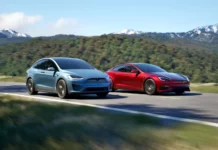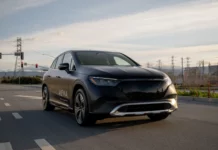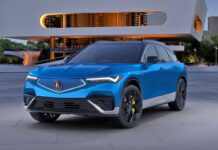California sells more electric vehicles than any other state, many of which in Southern California were reduced to rubble in the recent Los Angeles fires. And while the lithium-ion batteries used in electric vehicles don’t often catch fire, when they do, they cause extremely hot fires that use a significant amount of water to extinguish. When the fires die down, they leave behind a lot of toxic waste that needs to be cleaned up. This is the new headache and irony of electric vehicles – something that is supposed to help the environment is burning up from fires caused by global warming, and the batteries are leaving even more environmental damage in their wake.
According to S&P Global, cited by Bloomberg, as of October 2024, there were more than 431,000 Tesla electric vehicles in operation in the Los Angeles area. This does not include cars from other brands.
Electric vehicle fires can require tens of thousands of gallons of water to extinguish because the lithium-ion batteries they contain can release oxygen as they burn, which means that much more water is needed to cool a burning battery. Tesla publishes manuals for fire departments that teach them how to extinguish fires from their cars. General Motors used to hold four-hour training sessions for rescuers on how to stop stubborn fires that defy extinguishing.
Electric vehicles have a number of unique disadvantages to consider – they are often very heavy, which creates problems for road infrastructure, for example, and charging a large number of electric vehicles can put a strain on the power grid. These are some of the reasons why some city dwellers oppose electric cars altogether, arguing that city dwellers should use public transportation if they really want to support a greener future. They have a contradiction.
Electric vehicle fires are very rare: according to the National Transportation Safety Board, there are approximately 25 fires for every 100,000 electric vehicles sold.
Electric motors do not generate much heat, so fires most often occur during serious accidents when the battery ruptures and the sensitive chemicals and elements inside become unstable, releasing heat and then creating a self-sustaining cycle of uncontrolled heating. Of course, high temperatures from an external source, such as a forest fire, can also cause the battery to overheat.
Unfortunately, because electric vehicles have massive battery packs, there will now be a lot of toxic waste that will need to be removed and attempted to be recycled. The rain can cause toxic pollutants to end up in the ocean if they are not cleaned up in time.
Numerous studies show that the lifecycle emissions of electric vehicles will be 70% lower than gasoline or diesel vehicles, even when taking into account mining or charging. If you don’t go to extremes and don’t think cars should be completely phased out, electric cars are still better than gas alternatives.









